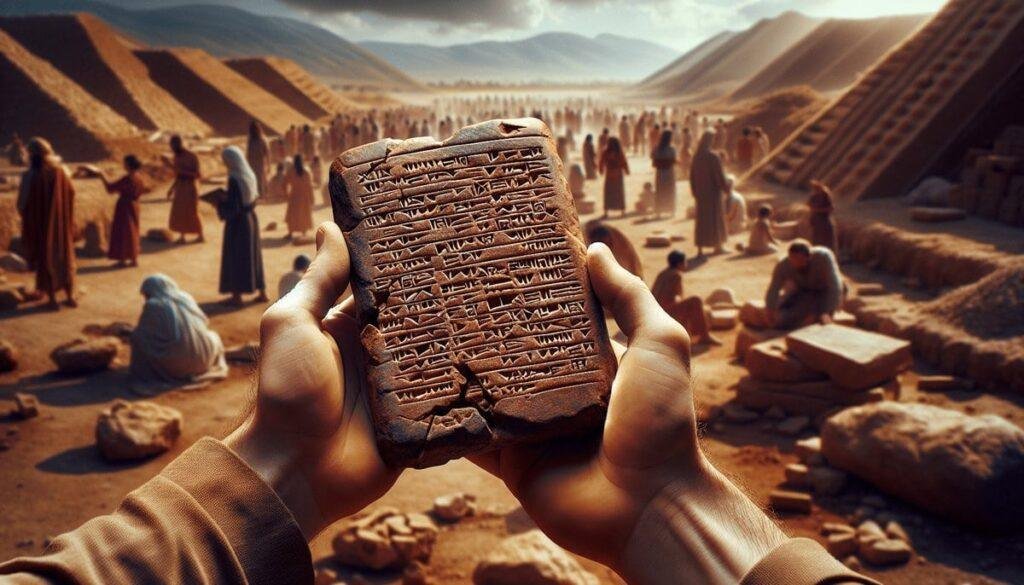Have you ever wondered about the gardens that flourished during the Temple Era, as described in biblical texts, and what they can tell us about that time? This exploration of Temple Era gardens in biblical archaeology invites you to journey back in history to better understand these verdant sanctuaries that played a pivotal role in religious, cultural, and social life.
Introduction
The recent unearthing of gardens from the Temple Era has captivated both archaeologists and biblical scholars. These discoveries offer tantalizing glimpses into a world where nature and spirituality intertwined in the historic landscapes of the ancient Near East. This article examines the context of these findings, delves into the archaeological evidence, and assesses their significance against biblical narratives. As you explore these ancient gardens, a deeper understanding of both history and tradition may unfold.
Discovery Context
Biblical References to Gardens
The mention of gardens in the Bible offers crucial clues that guide archaeologists today. Gardens in sacred texts often signify peace and divinity, such as the Garden of Eden, representing paradise. Gardens like Solomon’s—a model of wealth and beauty—embodied prosperity and divine favor. These references highlight the inherent cultural and symbolic significance gardens held during the Temple Era.
Historical and Geographic Background
The Temple Era refers to a time delineated by the construction of the First Temple or Solomon’s Temple in Jerusalem, around the 10th century BCE, to the destruction of the Second Temple in 70 CE. This era stretched across prolific regions including Judea, Samaria, and Galilee—areas abundant with archaeological promise. Geographically positioned at the crossroads of civilizations, these locations offered fertile grounds for the gardens that often surrounded sacred temple spaces.
Recent Archaeological Findings
Recent excavations have unraveled details about these historical gardens. In 2022, archaeologists discovered remnants of an irrigation system in Jerusalem, dating back to the Second Temple period. This sophisticated hydro-engineering shows the importance placed on maintaining lush gardens despite challenging terrains. Moreover, findings of seed remains and pollen analysis at sites like Jericho and Megiddo reveal what flora adorned these ancient landscapes and how they were cultivated during the Temple Era.
Archaeological Evidence
Specific Artifacts Unearthed
Artifacts unearthed from Temple Era garden sites include pottery shards, horticultural tools, and remnants of water systems like aqueducts and cisterns. These findings provide tangible connections to the agricultural practices of the time. Stone basins used for grinding grain, fragments of irrigation pipes, and ornate carvings from garden walkthroughs shed light on the complexity and aesthetic of these gardens.
Dating Methods and Analysis
To accurately date these artifacts, archaeologists employ various methods such as radiocarbon dating and dendrochronology. Radiocarbon dating of organic remains offers insight into the timeline of human activity, while dendrochronology—analyzing tree rings—helps date wooden artifacts and structures. These techniques, combined with stratigraphic analysis, allow experts to piece together the timeline and evolution of garden and agricultural practices in biblical history.
Expert Interpretations
Experts interpret these findings as more than just evidence of sophisticated landscaping. The remnants of specific plants like figs, olives, and pomegranates have been identified, indicating a diet closely tied to biblical descriptions. Scholars posit that these gardens were not only sanctuaries of relaxation and meditation but also reflected wealth and divine connection. Notably, botanist Dr. Sarah Mayfield asserts, “The variety and richness of flora reflect a diverse ecosystem intertwined with religious symbolism.”
Significance
Biblical and Historical Implications
Understanding Temple Era gardens enriches our reading of the Bible, offering depth to seemingly straightforward descriptions of paradise. These gardens are contextual backdrops to pivotal biblical narratives, shaping theological themes of fertility and divine providence. Their careful designs embodied spiritual ideals, reinforcing the interconnection between humanity and nature in religious life.
Impact on Modern Understanding
These ancient gardens offer insights into sustainable agricultural practices and inspire contemporary garden design and urban planning strategies emphasizing harmony with the environment. They challenge modern society to revisit traditional ecological practices that prioritized long-term sustainability.
Current Research and Ongoing Studies
Ongoing studies aim to further unravel the mysteries of Temple Era gardens using advanced technologies like GIS mapping and isotopic analysis. Continued excavation and study of pollen and seed samples enhance knowledge of ancient ecosystems, while digital reconstructions offer visual representations to engage wider audiences.
Conclusion
The exploration of Temple Era gardens through biblical archaeology provides profound insights into the spiritual, cultural, and ecological wisdom of ancient times. By unearthing the past, we gain valuable knowledge that contributes to the present and future understanding of human-nature interactions. As research progresses, these ancient sanctuaries may offer even deeper revelations. Engaged study and preservation of these sites ensure they remain a testament to history’s richness and complexity, inviting further investigation and appreciation.
[Engage with our detailed study on Temple Era gardens further by exploring academic publications and archaeological reports available online and at local libraries. Your understanding of these historical treasures could provide unique perspectives on humanity’s relationship with nature, both past and present.]





